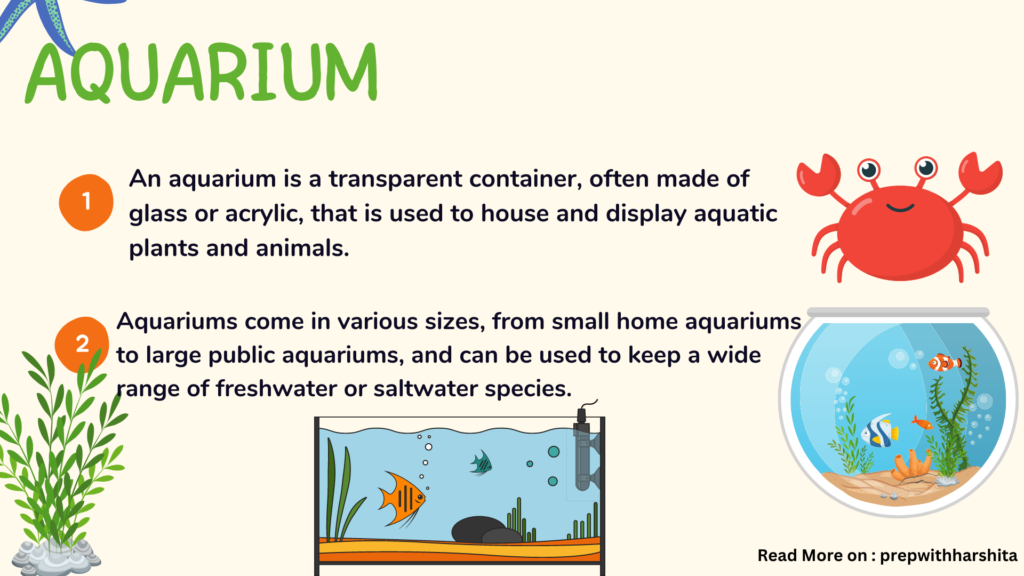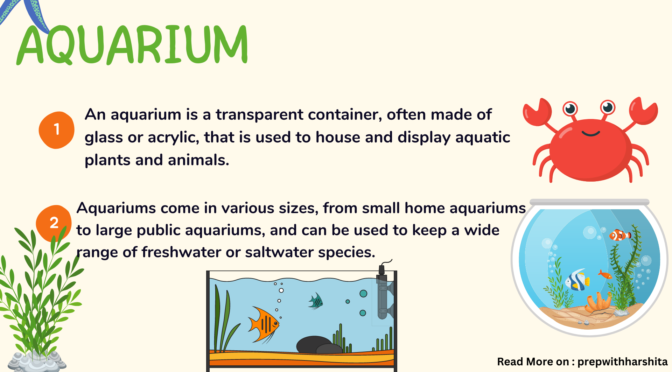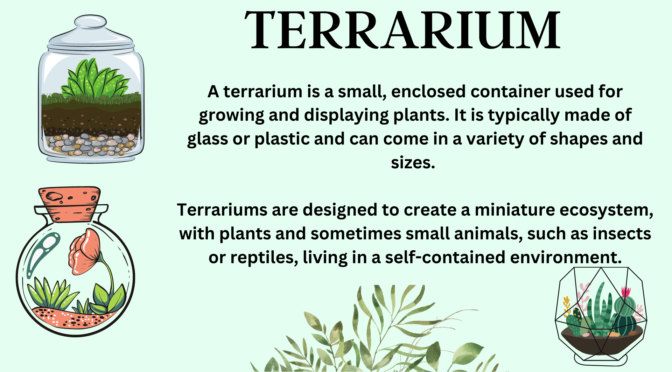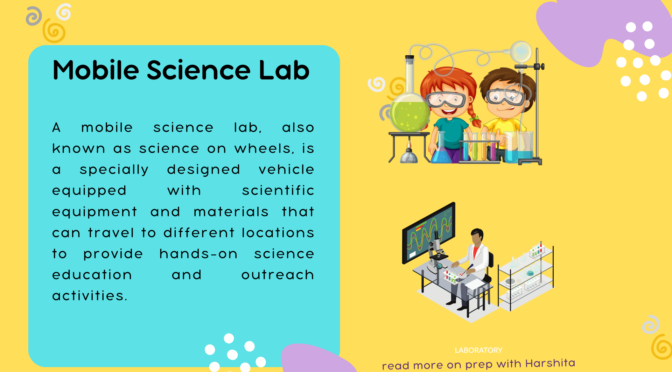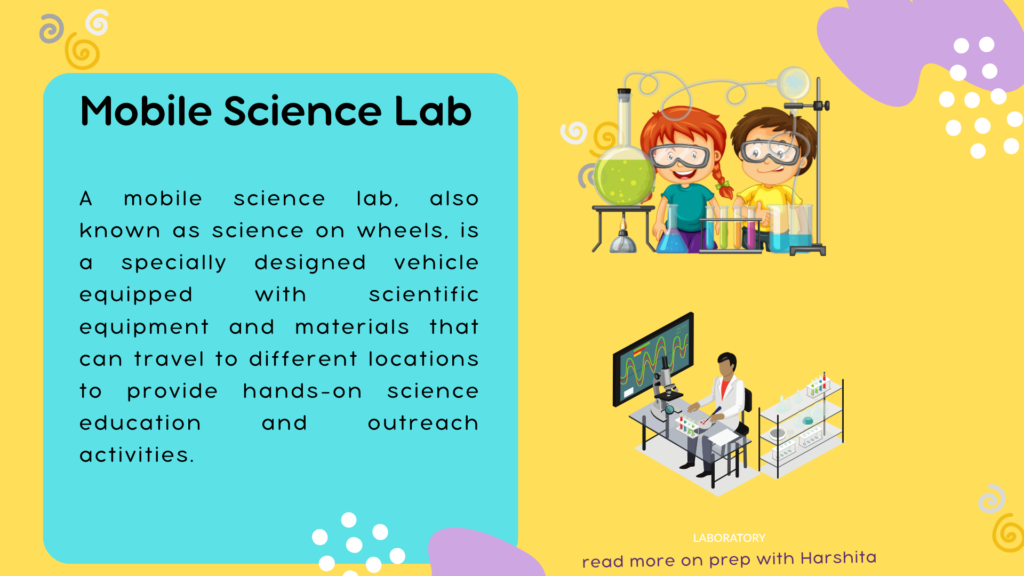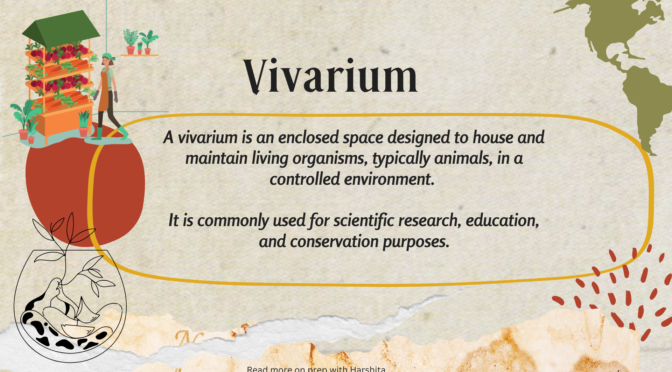An aquarium is a transparent container, often made of glass or acrylic, that is used to house and display aquatic plants and animals.
- Aquariums come in various sizes, from small home aquariums to large public aquariums. They can be used to keep a wide range of freshwater or saltwater species.
- Aquariums are often used as decorative objects in homes, offices, and other indoor spaces. They can add a calming and relaxing element to any environment and can be an enjoyable hobby for those interested in aquatic life.
- In addition, aquariums can serve as educational tools, providing opportunities for people to learn about marine life and ecosystems.
- Aquariums require regular maintenance to ensure that the water quality remains healthy and the aquatic life is well cared for. This may include regular water changes, feeding schedules, and monitoring water chemistry levels.
- Proper care of an aquarium can provide benefits such as stress relief and enjoyment from watching aquatic life.
Also Read: Terrarium
Benefits of Aquarium :
- Stress relief: Watching fish swim and interact with each other in an aquarium can be calming and relaxing, helping to reduce stress and anxiety. This can have a positive impact on mental health and well-being.
- Aesthetic appeal: Aquariums can be visually appealing and add a decorative element to any indoor space. They come in a variety of sizes and styles, and can be customized with a range of plants, decorations, and lighting to create a unique and personalized display.
- Educational value: Aquariums can be used as educational tools to teach children and adults about marine life and ecosystems. They help to learn about the natural world and can be a fun and engaging way to promote scientific curiosity.
- Health benefits: Aquariums can have a positive impact on physical health by providing a source of relaxation and stress relief. Studies have shown that watching fish can also lower blood pressure and heart rate.
- Social interaction: Aquariums can serve as a conversation starter and provide a shared interest for family and friends. They can also be a fun and educational activity for children, promoting bonding and quality time together.
Overall, aquariums offer a range of benefits and can be a fun and rewarding way to bring a touch of nature indoors while also promoting relaxation, education, and social interaction.
Also Visit: Prep with Harshita
